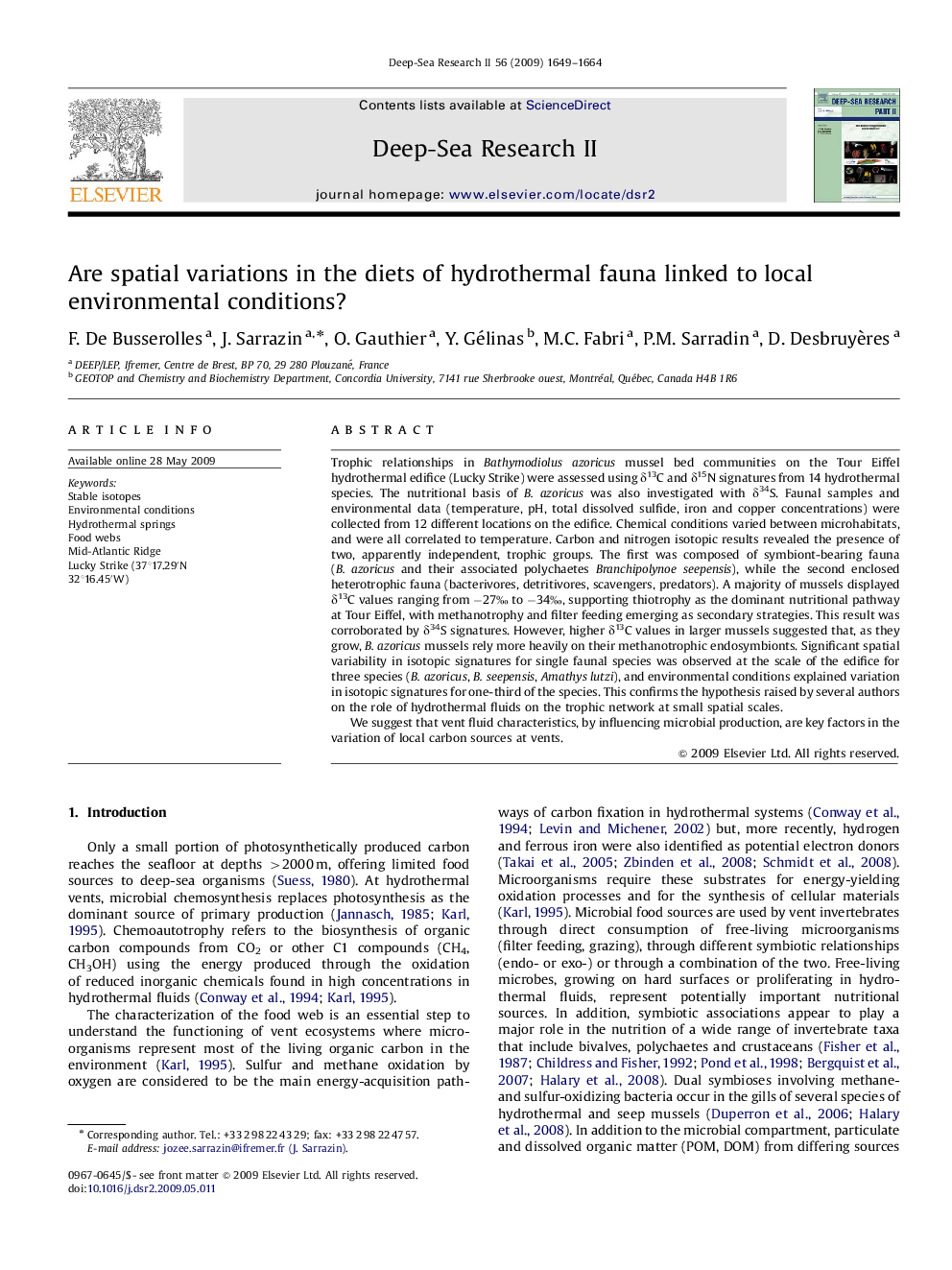| Article ID | Journal | Published Year | Pages | File Type |
|---|---|---|---|---|
| 4537288 | Deep Sea Research Part II: Topical Studies in Oceanography | 2009 | 16 Pages |
Trophic relationships in Bathymodiolus azoricus mussel bed communities on the Tour Eiffel hydrothermal edifice (Lucky Strike) were assessed using δ13C and δ15N signatures from 14 hydrothermal species. The nutritional basis of B. azoricus was also investigated with δ34S. Faunal samples and environmental data (temperature, pH, total dissolved sulfide, iron and copper concentrations) were collected from 12 different locations on the edifice. Chemical conditions varied between microhabitats, and were all correlated to temperature. Carbon and nitrogen isotopic results revealed the presence of two, apparently independent, trophic groups. The first was composed of symbiont-bearing fauna (B. azoricus and their associated polychaetes Branchipolynoe seepensis), while the second enclosed heterotrophic fauna (bacterivores, detritivores, scavengers, predators). A majority of mussels displayed δ13C values ranging from −27‰ to −34‰, supporting thiotrophy as the dominant nutritional pathway at Tour Eiffel, with methanotrophy and filter feeding emerging as secondary strategies. This result was corroborated by δ34S signatures. However, higher δ13C values in larger mussels suggested that, as they grow, B. azoricus mussels rely more heavily on their methanotrophic endosymbionts. Significant spatial variability in isotopic signatures for single faunal species was observed at the scale of the edifice for three species (B. azoricus, B. seepensis, Amathys lutzi), and environmental conditions explained variation in isotopic signatures for one-third of the species. This confirms the hypothesis raised by several authors on the role of hydrothermal fluids on the trophic network at small spatial scales.We suggest that vent fluid characteristics, by influencing microbial production, are key factors in the variation of local carbon sources at vents.
